Request copyright permission letter template
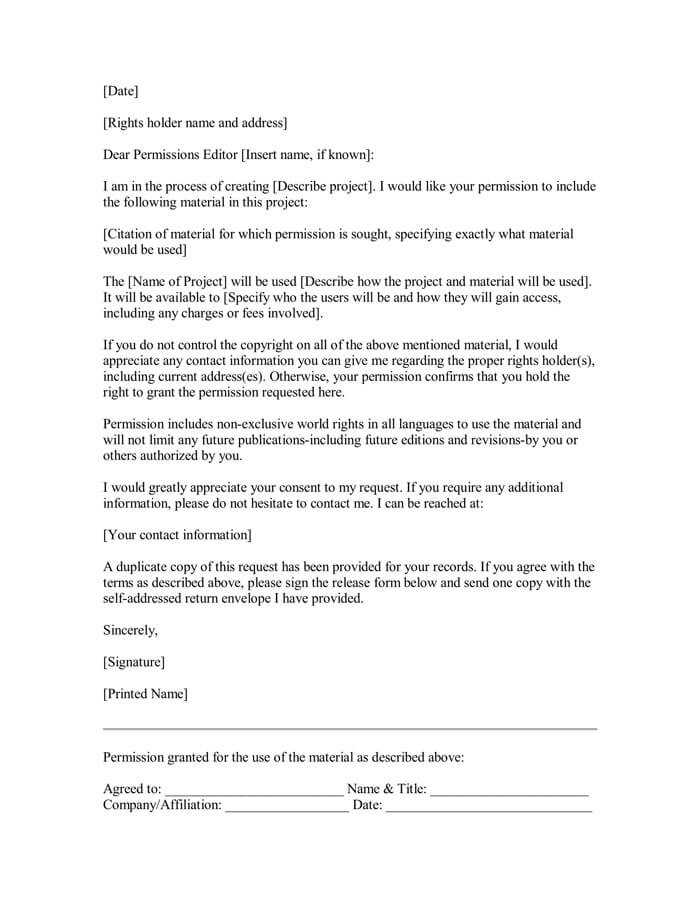
Got it! How can I assist you with your writing today?
Request Copyright Permission Letter Template
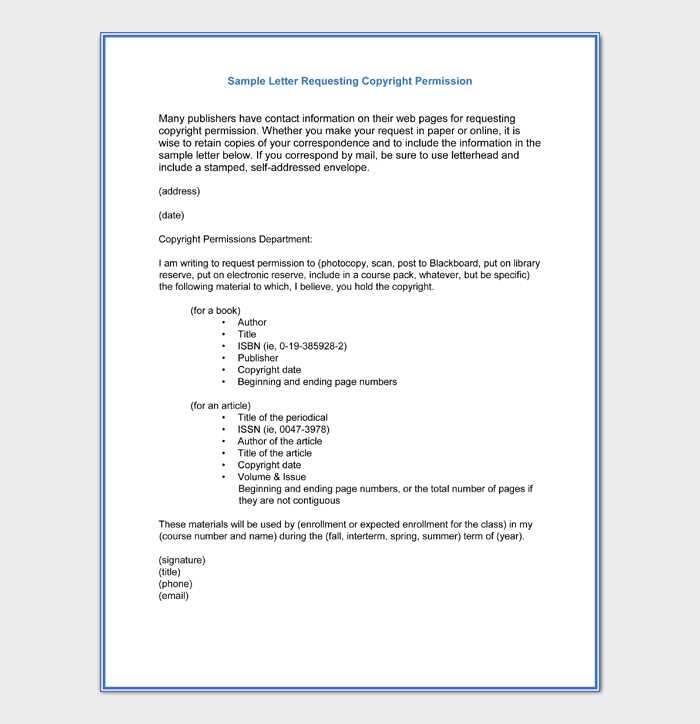
To request copyright permission, your letter should be clear, concise, and respectful. Be sure to include all necessary details about the copyrighted work and your intended use.
Key Elements to Include
- Contact Information: Start with your name, address, phone number, and email. Make it easy for the recipient to respond.
- Details of the Work: Provide specific information about the copyrighted work you are requesting permission for, such as the title, author, and date of publication.
- Purpose of Use: Explain how you intend to use the work, including the context and any distribution plans.
- Duration and Territory: Clarify how long you plan to use the work and if it will be distributed internationally or locally.
- Permission Request: Directly ask for the copyright holder’s permission to use the work as specified.
- Closing and Thank You: End the letter by thanking the recipient for considering your request and providing your contact information again for follow-up.
Sample Letter Structure
- Your Details: Start by introducing yourself with your full name and contact information.
- Recipient’s Details: Include the copyright holder’s name, title, and company (if applicable).
- Request: Politely explain your request, specifying what work you want to use and how you plan to use it.
- Conclusion: Conclude with your contact details and a polite closing statement.
Understanding the Purpose of a Copyright Permission Letter
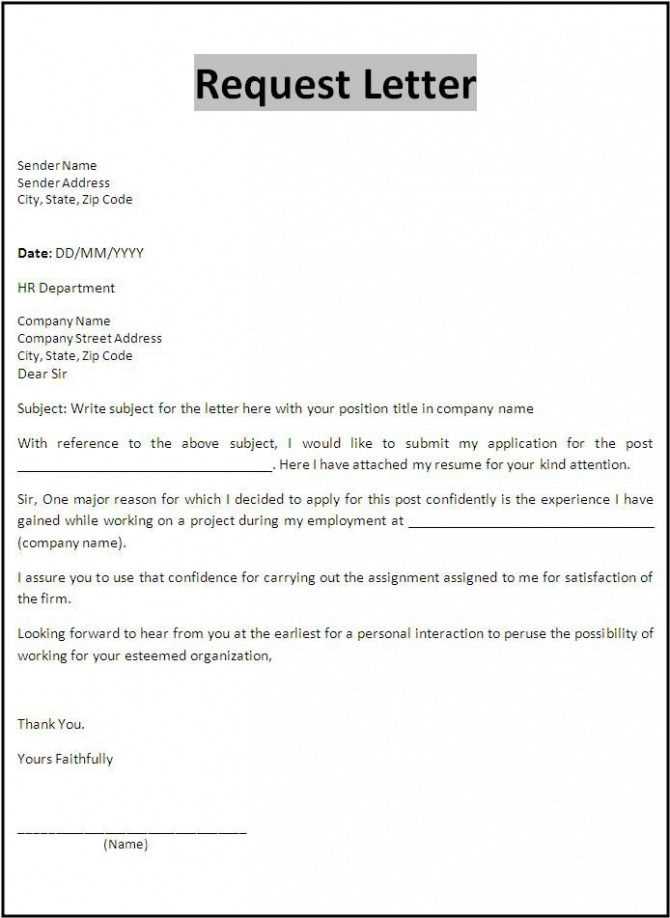
A copyright permission letter grants the right to use copyrighted material, allowing you to avoid legal complications. This letter serves as an official request to the copyright holder, ensuring that you have authorization to reproduce, distribute, or display their work. Without proper permission, you risk violating copyright laws, which can lead to costly legal consequences.
Clarifying Usage Rights
The letter outlines specific permissions regarding how and where the copyrighted work can be used. This ensures both parties have a clear understanding of the terms, including the scope and duration of the permission. It also helps prevent disputes over unapproved usage.
Protecting Legal Interests
For the creator of the work, granting permission through a formal letter protects their intellectual property while maintaining control over how it’s used. For the user, the letter provides evidence of permission, which can be essential if ownership is disputed later on.
- Defines the scope of permitted use.
- Ensures both parties are aware of rights and responsibilities.
- Acts as a legal document in case of future disputes.
Key Information to Include in Your Request
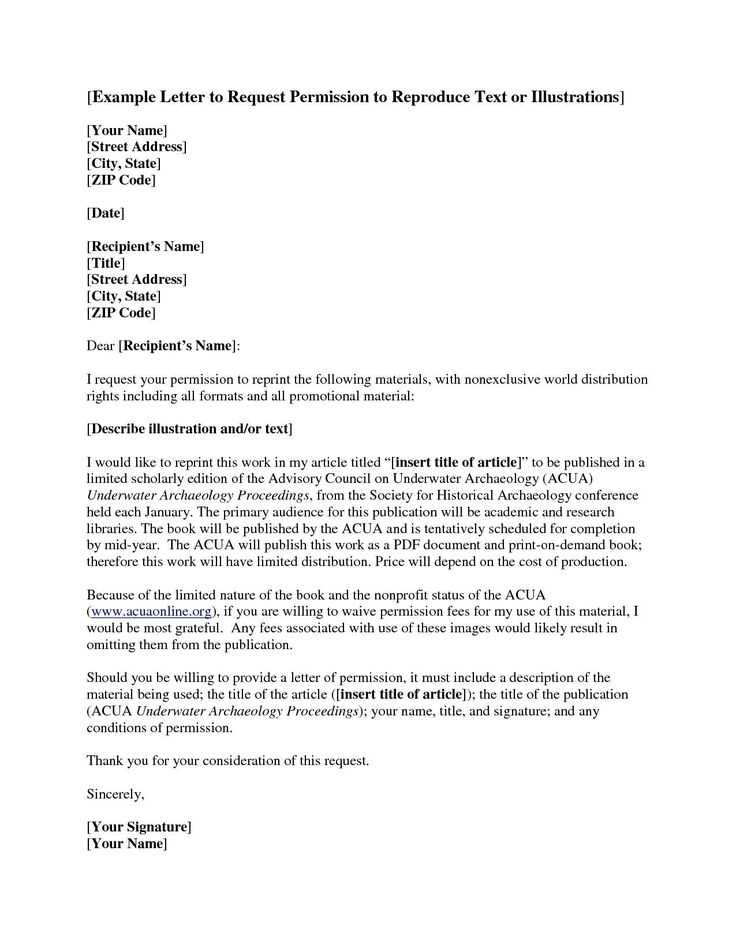
Begin with a clear statement of your request. Specify the work or material you want to use, along with how you intend to use it. Include precise details such as the title of the work, the format, and the medium (e.g., online publication, print, etc.).
Provide Specific Dates
Always mention the time frame for your intended use. This includes both the start date and any relevant expiration dates for your permission request. This helps the copyright holder understand the scope of your request.
State Your Audience and Reach
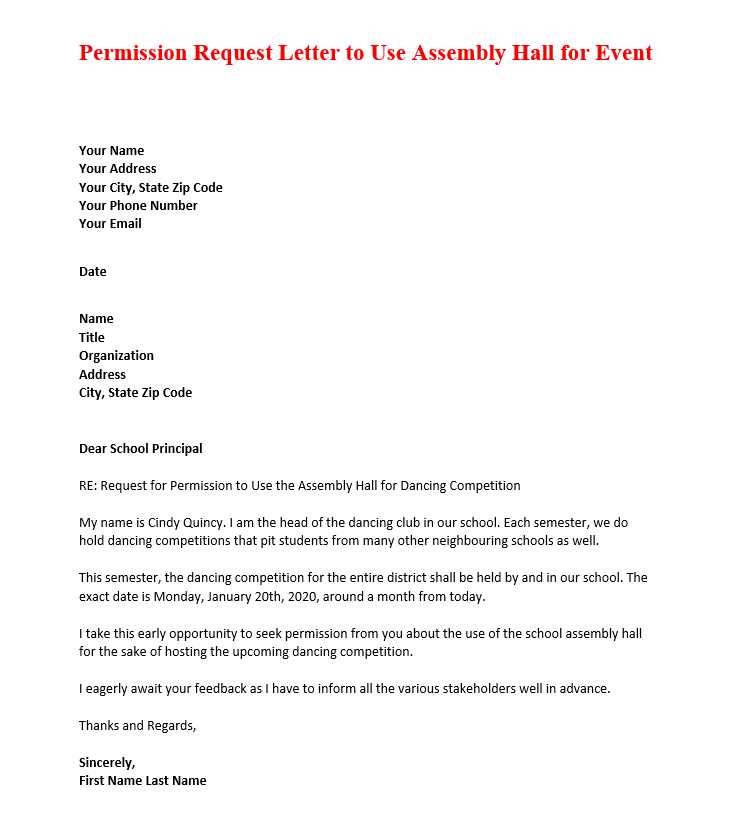
Indicate the size of your audience and the potential reach of your project. Whether it’s for a local publication, national distribution, or an international project, being transparent about your intended reach helps clarify your request.
Additional Details include the number of copies or the duration of the material’s usage. If the work will be modified, such as in an adaptation or translation, be sure to mention this as well. Clear terms avoid misunderstandings later.
Lastly, provide your contact information, including your full name, company (if applicable), and a direct way to reach you for follow-up. This ensures the copyright holder can respond easily to your request.
How to Address the Copyright Holder Properly
Begin your letter with a clear and respectful greeting. If you know the copyright holder’s name, use it directly, such as Dear Mr. Smith or Dear Ms. Johnson. If the specific individual is unknown, use a formal but neutral salutation like Dear Copyright Holder.
Always ensure that the tone of your message remains polite and professional throughout. If you’re unsure about their official title, opt for the formal version such as Dear Sir or Madam. This demonstrates respect and maintains a professional rapport.
When referring to the copyright holder in the body of the letter, use their full name or formal title unless you have an established relationship where a more casual approach is acceptable. This shows that you acknowledge their legal rights and role in the matter.
In closing, choose a courteous sign-off such as Sincerely or Best regards, followed by your full name and contact details. This helps ensure clarity and maintains professionalism.
Determining the Correct Tone for Your Letter
Use a polite and respectful tone when writing a copyright permission request letter. Keep it professional but approachable. Avoid being too formal, as it may come across as distant, or too casual, as it can seem unprofessional. Balance is key.
Clearly state your request early on, without beating around the bush. Show that you understand the importance of intellectual property rights while expressing your genuine interest in obtaining permission. Keep your language direct but courteous.
Be concise yet thorough. Focus on what you need and why, without over-explaining. A friendly tone helps maintain a positive relationship with the recipient, increasing the likelihood of a favorable response. Always ensure your language reflects respect for the copyright holder’s decision-making process.
Common Mistakes to Avoid When Requesting Permission
Be specific in your request. Avoid vague wording that leaves the permission unclear. State exactly what you intend to use the copyrighted material for, how it will be used, and for how long. This clarity ensures the rights holder can make an informed decision.
Incomplete Information
Provide all relevant details, such as the source of the content, the nature of the project, and the audience it will reach. Omitting any of this can delay the process or result in rejection.
Failure to Clarify Terms
Ensure you clearly outline the terms of use. This includes the type of rights requested, whether exclusive or non-exclusive, and any geographical or time limitations. Ambiguity may lead to misunderstandings or conflict later on.
| Mistake | Solution |
|---|---|
| Vague wording | Specify intended use and duration |
| Incomplete information | Include all relevant project details |
| Unclear terms | Define all conditions clearly |
Following Up After Sending Your Request
Send a follow-up email 7-10 days after your initial request if you haven’t received a response. Keep the tone polite and respectful. In your message, reference the original request and politely inquire about its status. Acknowledge that they may be busy, but ask for a brief update on the matter.
How to Phrase Your Follow-Up
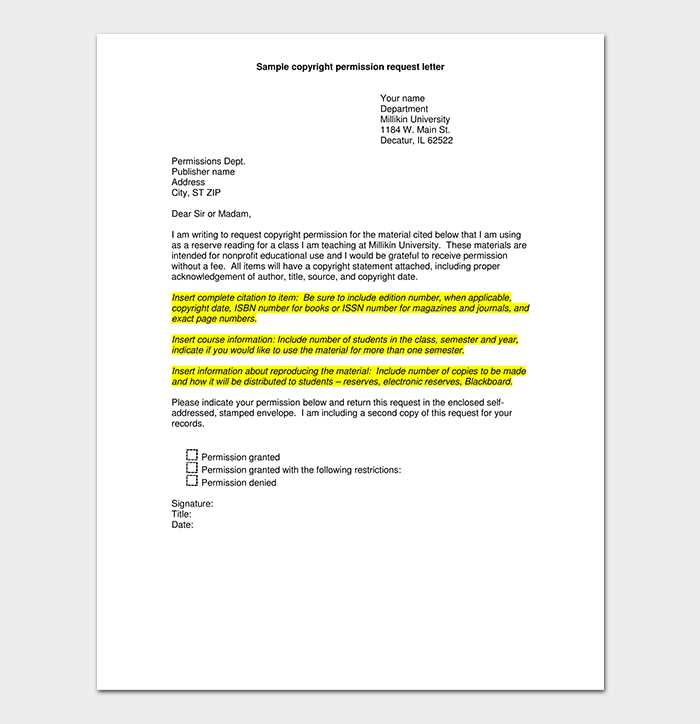
Start with a friendly greeting and mention the date you sent your original request. Reaffirm your interest in receiving permission and express your understanding of their workload. Keep the email short and to the point, and offer to provide any additional information if needed.
What to Do if There Is No Response
If there is still no response after your second follow-up, you may want to consider contacting another person within the organization or exploring alternative ways to reach them. If all else fails, it might be best to move on to other projects or sources of permission.